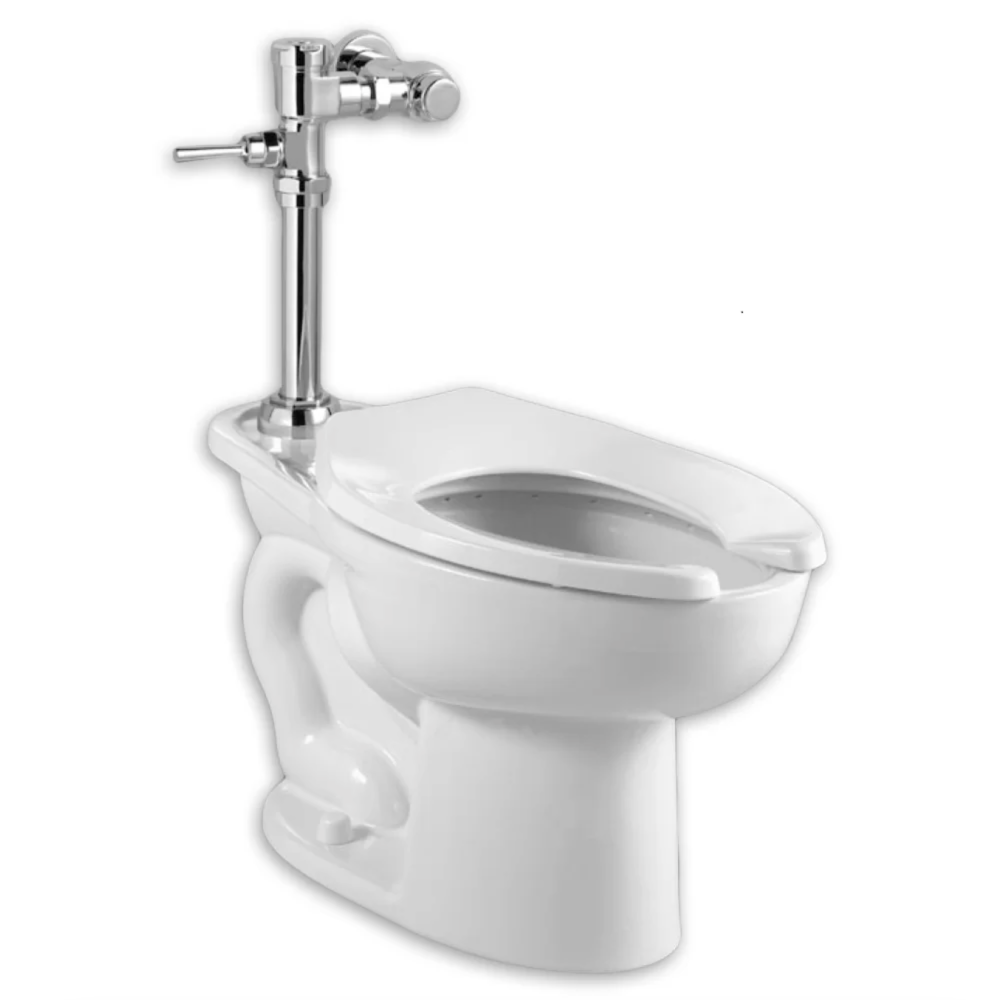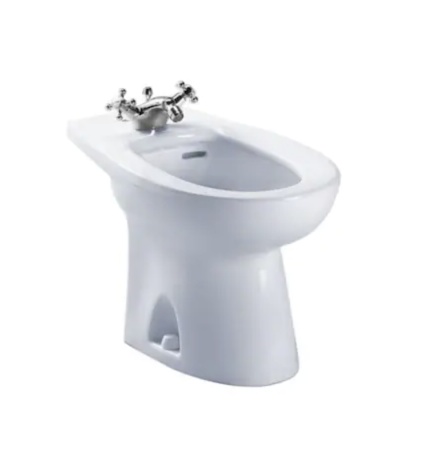A water closet in the U.S. is commonly referred to as a toilet. The term “water closet” originates from the time when plumbing was brought indoors, and defecation took place in a small, closet-size room with a pot.
Toilet Styles
There are three styles of water closets: close-coupled, one-piece, and flushometer valve. The most common is the close-coupled water closet, which has a bowl and separate gravity-type tank or flushometer tank that is supported by the bowl. A one-piece water closet is constructed with the gravity-type tank or flushometer tank and bowl as one integral unit. A flushometer-valve water closet is a bowl with a flushometer valve. Water closet bowls come in six styles: blow-out, siphon jet, reverse trap, wash-down, siphon vortex, and siphon wash.

Close-coupled toilet 
One-piece toilet 
Flushometer valve toilet
Toilet Measurements
A water closet has a water consumption limit of a maximum average of 1.6 gallons of water per flush. The general bowl rim height above the floor is between 14 and 15 inches. Other rim heights may be needed for water closets used by children (10 inches), and the elderly and persons with physical disabilities (18 inches). Elongated water closet bowls are required for public or employee use but are often installed in homes. An elongated bowl is 2 inches longer than a regular bowl.
Defects at Toilets
The water closet (toilet) may have a clogged drain. While flushing the toilet, watch the flush performance, and use toilet paper as part of this test. There should be no excessive odors around the water closet. Check the flooring around the toilet with your foot. Using the side of your leg, check to see if the toilet is securely attached to the floor. If it wobbles, the screws at the base may be loose, or the wax ring that adheres the fixture to the waste pipe may be worn or of the wrong size. If so, it should be replaced. Look for dampness around the bottom of the toilet base. Toilets sometimes run continuously. Check for a water shut-off valve. Some toilets are mistakenly connected to the hot water system. Tank lids are often cracked. Any defective parts should be immediately replaced to avoid backup flooding.
Bidets

Common in much of Europe and Asia, bidets are toilet-like plumbing fixtures designed to promote posterior hygiene. They’re becoming increasingly common in North America. Contrary to popular belief, a bidet is not an alternative to a toilet. Its purpose is as a hygiene device following toilet use. However, some bidets have been incorporated into toilets, especially in bathrooms that are not large enough for both fixtures.
Bidets, like toilets, are typically made from porcelain and contain a deep recess within a wide rim. They emit an arc of clean water from a nozzle that may be located beneath the rear of the rim or deep within the fixture’s cavity. Users can sit on the rim (or seat, if it has one), or straddle the fixture and face in either direction. He or she can decide which direction to face based on the water jet configuration and the part of their body that needs cleaning. Water temperature and pressure can be adjusted with knobs in order to arrive at the desired settings.
Some bidets come with built-in air dryers. Toilet paper can be used for this purpose if no dryer is available. The bidet can be rinsed after use to keep it clean.
Benefits
- People who suffer from hemorrhoids, irritable bowel syndrome, or have recently had surgery can find relief with the more gentle water flow of a bidet.
- As the bidet requires less operator mobility, they are easier to use for the elderly, disabled and obese.
- Many believe that the use of bidets is more hygienic and effective than toilet paper.
Safety Precautions
- Users should familiarize themselves with the rate of temperature and pressure changes that occur when they adjust the controls. Sensitive regions can be burned if the user is not careful, and high water pressure can be irritating.
- Users should know in advance the direction of the water arc and position themselves accordingly. The spray can be powerful enough to strike a person in the face.


